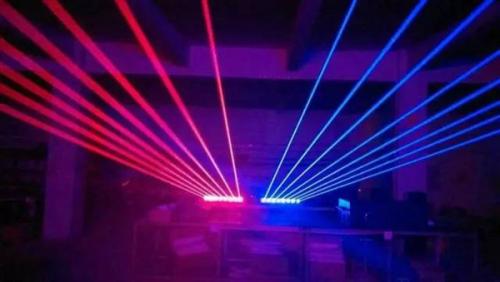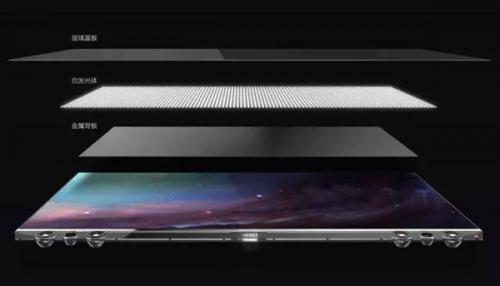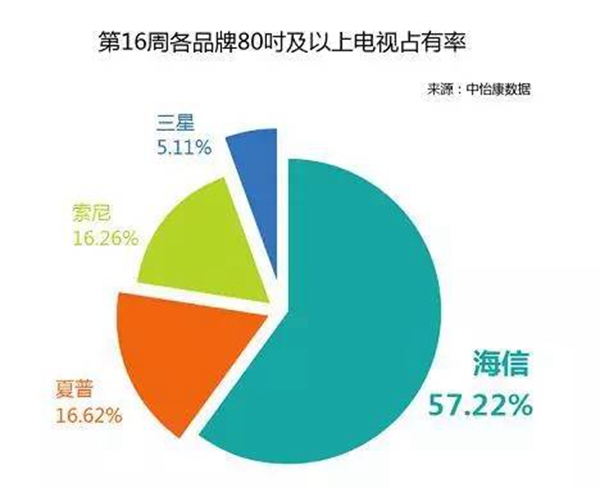OFweek Smart Home Network News The appearance of smart TV has given the entire TV industry a new vigor. After the plasma and LCD TVs, now the TV industry has stood at the junction, quantum dot orOLED? Major TV brands including Samsung, Sony, LG, and domestic TCL, Skyworth, and Hisense all have their own choices. The sudden loss of laser TV made this pattern begin to sound subtle changes......

Both Hisense and Changhong have been pushing laser television in the past two years, but they have not received enough attention. In the near future, Xiaomi will release a new product on June 28, which has almost been confirmed as laser television. And the price is only 1/6 of Hisense, Changhong laser TV. Because millet itself has its own hot spots, laser television has also started to attract more people's curiosity.
Laser TV is not just a projector
To be precise, what is currently on the market should be laser projection television. As the name implies, this is also a kind of projection. But it is different from the projection equipment that we normally see in university teachers or conference rooms. Laser TV is based on ultra-short-focus projection technology and laser light source technology to achieve short-distance large-size screen projection equipment, but also have to be equipped with a set of audio equipment.
Laser TVs should be a complete set of audio and video entertainment facilities for families, including ultra-short-throw projection, projection screens, and audio equipment. The general projector uses a xenon lamp as a light source. Experienced people can deeply understand the disadvantages of low brightness of the screen. This is why teachers usually turn off the lights and pull the curtains in class.
Laser TV has obvious advantages in large screen TV
The reason why laser television can be used as a television is that the laser light used by it greatly improves the brightness of the screen. In theory, the laser has good monochromaticity and can restore more real colors. The NTSC color gamut can be up to 110% better than an OLED screen. At the same time, laser television also has ultra-low power consumption, and its lifetime is much longer than that of ordinary projectors, and it is longer than the average television life.

In addition, compared with ordinary projection, it is necessary to adjust a certain distance and fix it when projecting an ideal screen size, and it is also troublesome to install it. Due to the ultra-short focal projection characteristics of laser televisions, the transmission ratio is basically below 0.25, and a picture of 100 frames or more can be displayed at a distance of about half a meter, which can satisfy the usage scenarios of ordinary televisions and is more convenient.
And most importantly, the cost of LCD or OLED TVs is very high in the large-sized TV field. Sony’s 100-inch LCD TVs sell for 500,000 yuan, and LeTV’s 120-inch LCD TVs sell for as much as 499,000. LG latest OLED TV 77-inch price of nearly 200,000 yuan, while Hisense, Changhong laser TV prices are above 100 inches above and below 50,000 yuan, cost can be imagined.

However, compared with the current mainstream OLED and quantum dot display technology, laser television still has obvious deficiencies. OLEDs are self-illuminating, capable of exhibiting purer blacks, with virtually no light leakage problems, and at the same time being more responsive. The laser television, after all, is a projection, if the same size screen, the screen display is still weak. The biggest problem with OLED TVs is the cost, which is much higher than that of ordinary LCD TVs, not to mention the large-screen TVs that are larger than 100 inches.
The quantum dot TV, in fact, is also a kind of LCD TV. Thanks to the use of a quantum dot material backlight, the performance of the color gamut is greatly improved and the color performance is even better. Coupled with today's HDR technology, the actual effect is closer and closer to the OLED. In the giant screen TV field, the price is still comparable to the price of a luxury car.
In fact, it is not difficult to find that laser television and quantum dot and OLED TV really compete only in the field of large-screen televisions. On average home-size TVs, laser televisions do not have an advantage over quantum dots or OLED TVs, even at prices. It is not necessarily cheap. This is also the reason why laser TV mainly focuses on the TV market of more than 100 feet.

Today, laser television promotion is the most active or Hisense, the first in the country to launch a 4K laser television, finally solved the 100-inch with 1080P resolution. According to the results of the China Yikang monitoring data, Hisense has occupied more than half of its share of the 80-plus and above TV-based televisions. It is worth noting that Hisense is still a supporter of Quantum TV, focusing on Quantum-dot TVs in small and medium size, while laser TVs are responsible for over 100-inch large-screen TVs.
The fourth-generation display technology VS Quantum dots, OLED
Laser TV is hailed as the fourth-generation display technology, overcoming many disadvantages of traditional projectors, but as a combination of laser light source technology and ultra-short-focus projection, the cost of laser television is not low, and it is not wise to use in small and medium size. . However, television screens that have risen above 100 inches are much lower than LCDs and OLEDs. For LCD TVs and OLED TVs, the larger the screen size, the more difficult the cutting process will be, and the cost will be so high that the current super-large-screen TV is still astronomical, and only the local tycoon, the headmaster, will consider it.

For the average home or business, if you need a large-screen TV, comparing these three display technologies and the status quo of the product, laser TV is definitely the most appropriate choice. As for small and medium-sized TVs, laser televisions pose no threat to quantum dots and OLED TVs. However, in the future, as technology advances, quantum dots and OLED TVs can control costs on large-size panels, and they may be able to recover the large-screen TV market.
LED DJ Console Display is a kind of led electronic display screen designed and made according to the customer's specific requirements. DJ Table LED Display Stage can be applied in many fields due to its flexibility of control and combination. It is a bar mark, which is the most distinctive stage facade.
It has an impact on the stage, starts from this moment. It can be widely used in bars, KTV, stage performance and other places.
Characteristics
1. Exquisite effect, smooth transition
2. Assemble and disassemble design, quick and convenient maintenance
3. Innovative unique creation, bar vision 3D design concept
LED DJ Console Display, Fantasy LED DJ Console Display, Video LED DJ Console Display, LED Honeycomb DJ Console Display
Shenzhen Priva Tech Co., Ltd. , https://www.privaled.com